How to Fix Google Chrome ‘He’s dead, Jim!’ Error on Windows and ChromeOS
‘He’s dead, Jim!’ is an error that typically appears when Windows or Chromebook users attempt to start Google Chrome. The error presents itself with a short message on the screen (He’s dead, Jim!), accompanied by a few troubleshooting suggestions that aren’t really effective in resolving the issue in most cases.
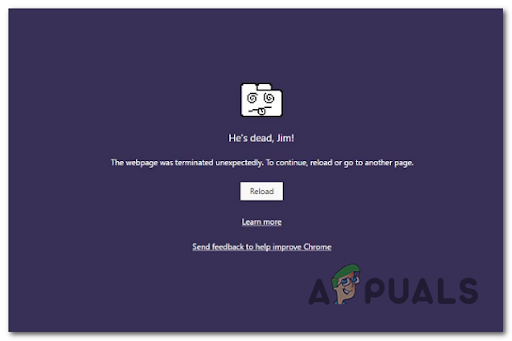
Note: ‘He’s dead, Jim’ is a famous catchphrase and snowclone that was originally used in Star Trek: The Original Series by Dr. Leonard McCoy to confirm and report a death to Captain Kirk.
Before jumping straight to the fixes that should resolve the issue on Google Chrome, you first need to understand what causes this error, so here’s a shortlist of possible scenarios that cause your Google Chrome ‘He’s dead, Jim!’ Error:
Now that you are aware of the possible scenarios, here are a few underlying fixes (confirmed by other users) that should help you fix your Google Chrome ‘He’s dead, Jim!’ Error:
Reload the page
If you’re only encountering this issue when waking your PC from sleep after leaving Chrome opened, the fix might be as simple as forcing the Chrome page that is displaying the “He’s Dead Jim’ to reload.
If you’re seeing this error due to a glitched script, reloading should allow you to avoid the apparition of the issue entirely.
To do this simply, click on the reload icon in the top-left corner of the browser page and see if the page reloads without the apparition of the same annoying error.
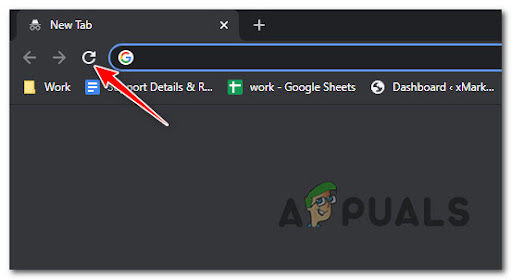
If you just reloaded the page and you’re prompted by the same ‘He’s dead, Jim’ error, move down to the next potential fix below.
Close the inactive tabs
If you’re using a PC with limited available resources in the RAM department, it’s possible to see the ‘He’s dead, Jim‘ error in situations where your PC is simply unable to handle all the active web pages.
Even though Google Chrome has gotten a lot better at resource management with the latest interactions, you can still expect to see this error popping up if you have a lot of tabs opened that are running background scripts.
Note: You can check the current memory and CPU usage by pressing Ctrl + Shift + Esc to open Task Manager. Once inside, go under Processes and check the percentages related to CPU and Memory.
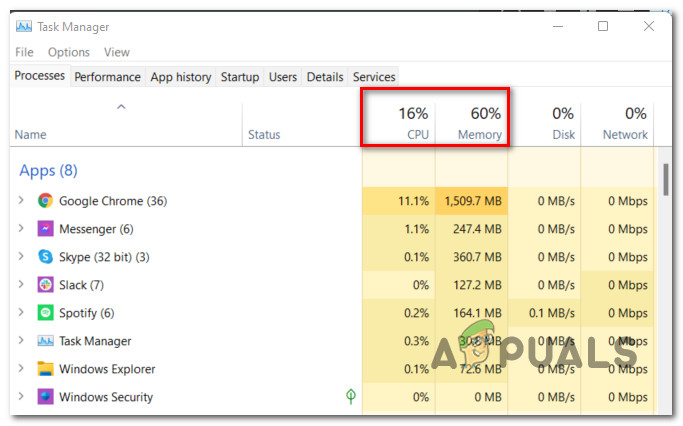
In case you only see this error occurring while using a low-end PC, what you can also do is close any inactive Google Chrome tab that you’re not actively using. This will ease the pressure off the RAM department, allowing your PC to process the data without being forced to force crash certain scripts.
To close the inactive tabs that you don’t really need, simply click on the X icon associated with each tab until you’re left with only those that you absolutely can’t do without.
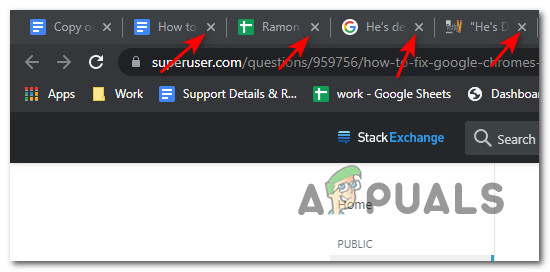
Once every necessary page is closed, reload the page that was triggering the ‘He’s dead, Jim’ and see if the problem is now fixed.
If the problem is still not fixed, move down to the next potential fix below.
Disabling the ScriptSave Extension (or similar)
If the first method was not effective in your case, the problem is most likely related to a 3rd party extension or to memory mismanagement.
If the ‘He’s dead Jim!’ error is related to a problematic extension, the most common culprit is ScriptSafe. This extension provides an additional security layer between the end-user and the scripts that are being run in the background by the pages that the user opens.
ScriptSafe is most commonly reported as being responsible for this kind of issue, but there’s bound to be other similar extensions that might cause the same kind of behavior.
If you’re using ScriptSafe or a similar extension that gives you more control over your browsing with various protection mechanisms, you might want to disable it first and see if the ‘He’s Dead, Jim’ error is resolved.
If this scenario looks like it could be applicable, follow the instructions below to disable the problematic Chrome extension:
Note: The instructions below will work for both Windows and ChromeOS.
- On the window that is triggering the ‘He’s dead, Jim’ error, click on the action button (top-right corner) and click on More Tools > Extensions.

Opening the Extensions tab - Once you’re inside the Extensions tab, look for ScriptSafe or the equivalent extension that you suspect might be causing the issue.
- After you locate the problematic extensions, simply disable the On / Off toggle of the ScriptSafe (or equivalent) extension.
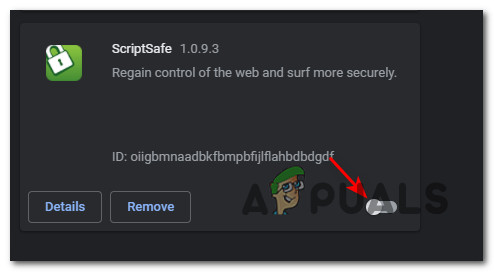
Disabling the Problematic extension Note: Additionally, if you don’t have a use for this extension, you can uninstall it completely by clicking on Remove and confirming the operation by clicking Remove once again.
- Once the extension has been health with, close the Chrome browser before restarting it once again and seeing if the error is now fixed.
If the ‘He’s dead, Jim’ error is still occurring when you open a Chrome webpage and you’ve just ruled out the possibility of an interfering extension, move down to the next potential fix below.
Disable AppContainer (Windows Only)
It’s not uncommon to face this problem due to security mitigation that blocks network access from sandboxed processes. While this is a security feature that is unnoticeable in most cases, certain webpage scripts might crash because of it.
In case you’re only experiencing the ‘He’s dead, Jim’ error when opening certain web pages that are running some kind of script, you should be able to fix the issue by disabling AppContainer for Google Chrome by using the ‘–disable-appcontainer’ switch. You can do this by modifying the target field of the shortcut or taskbar pin.
Follow the steps below for complete instructions on resolving the ‘He’s dead, Jim’ error on Windows by disabling the AppContainer security mitigation and by modifying the launch shortcut of Google Chrome:
Note: The instructions below will only work on Windows, not Chrome OS. You can follow the steps below if you’re on Windows 8.1, Windows 10, and Windows 11.
- First, you need to find Google Chrome’s shortcut, then right-click on it and open Properties.

Open up the Properties screen of Google Chrome Note: You can also right-click the Google Chrome pin from your taskbar.
- Inside the Properties menu, use the menu at the top to access the Shortcut tab.
- Once you’re inside the Shortcut tab, locate the Target entry.
- Next, add the following line of code at the end of the target box, right after ‘ “ ‘:
--disable-appcontainer
- After the line of code has been added at the end of the target box, click on Apply to save the changes and make the changes permanent.
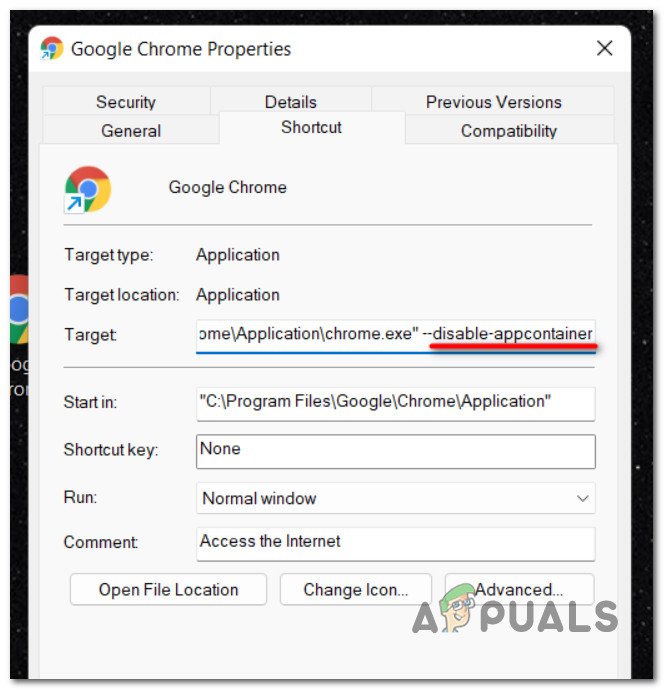
Disable the App container - Restart your browser and see if the problem is fixed once you restart Chrome and load the same webpage that was previously triggering the error.





